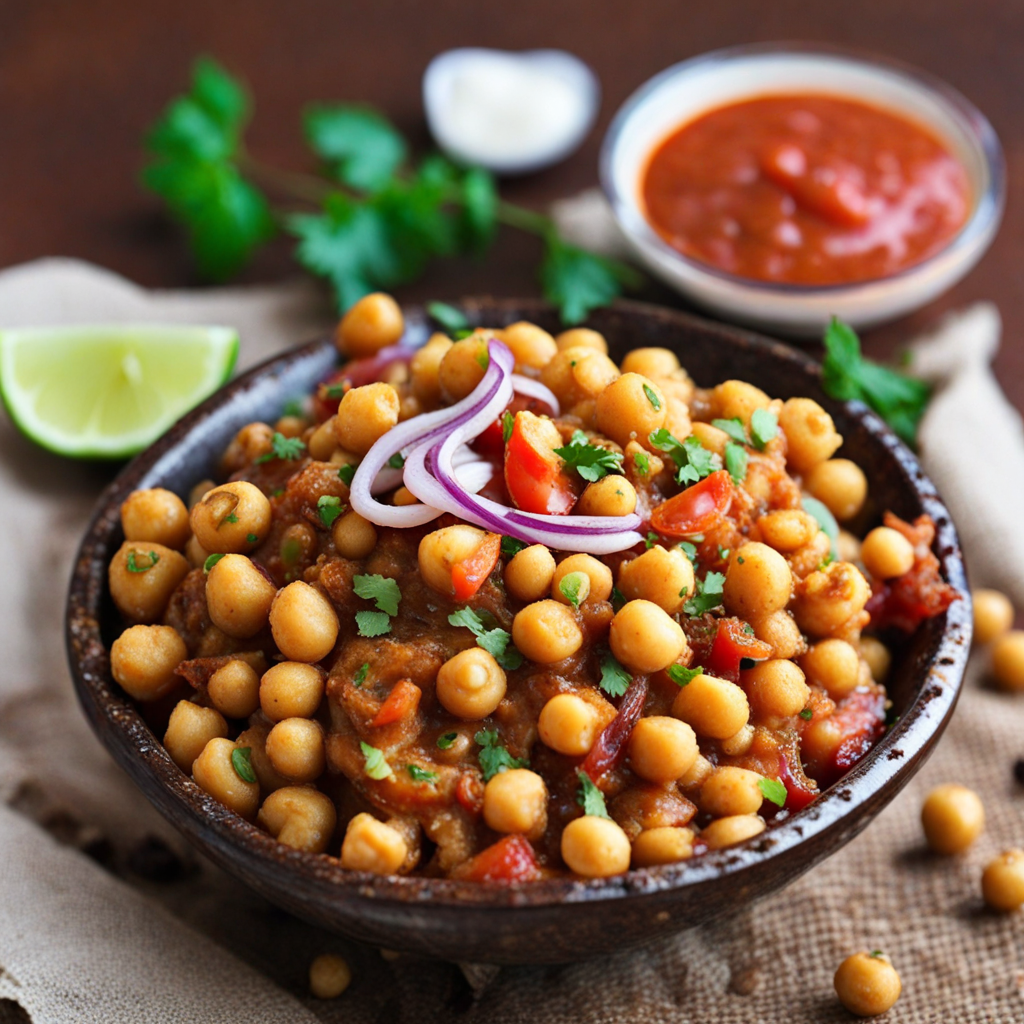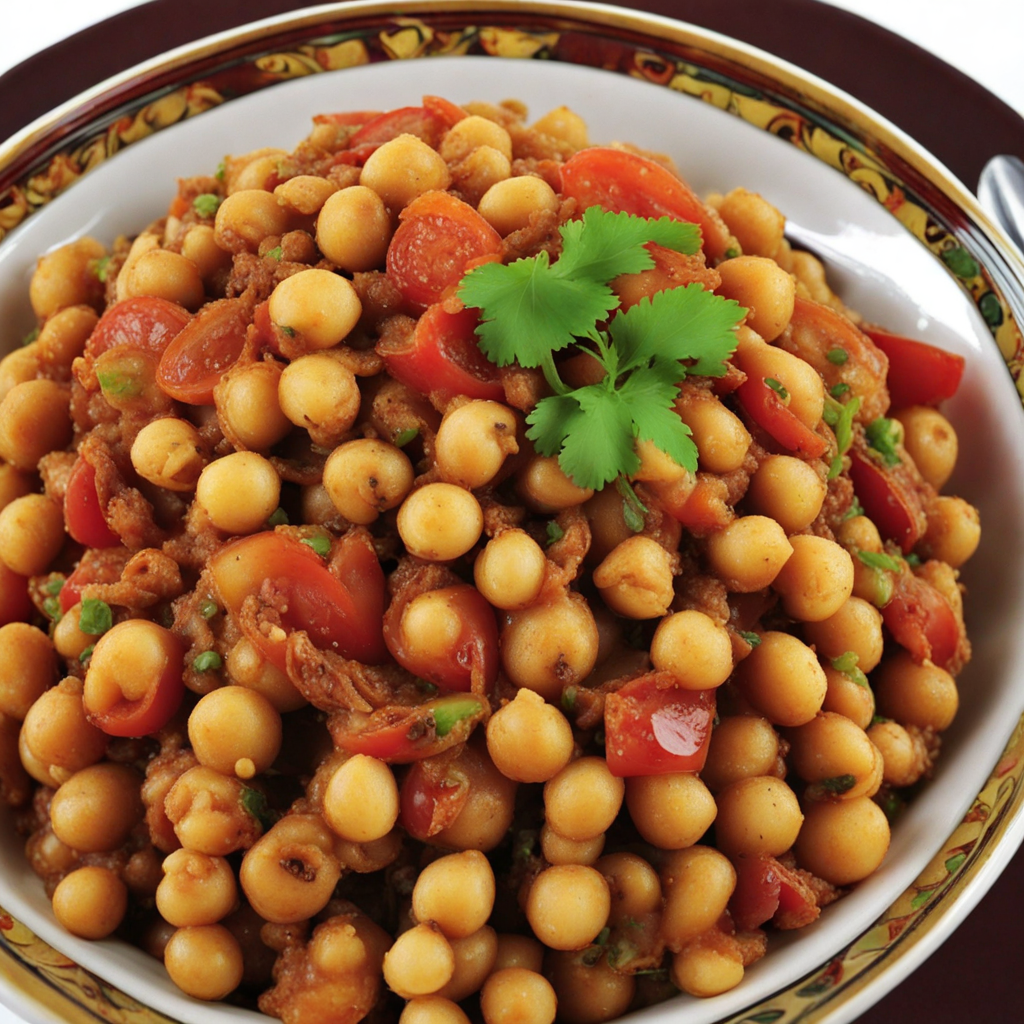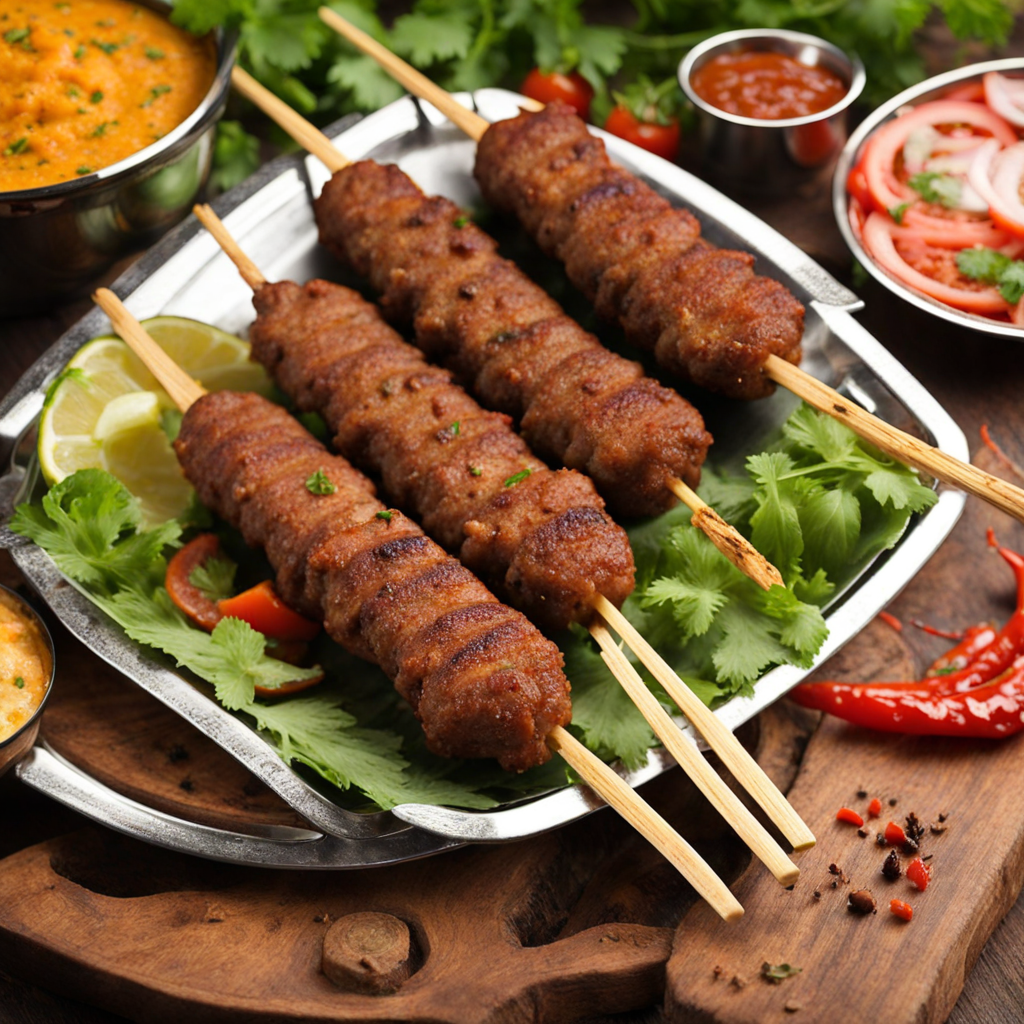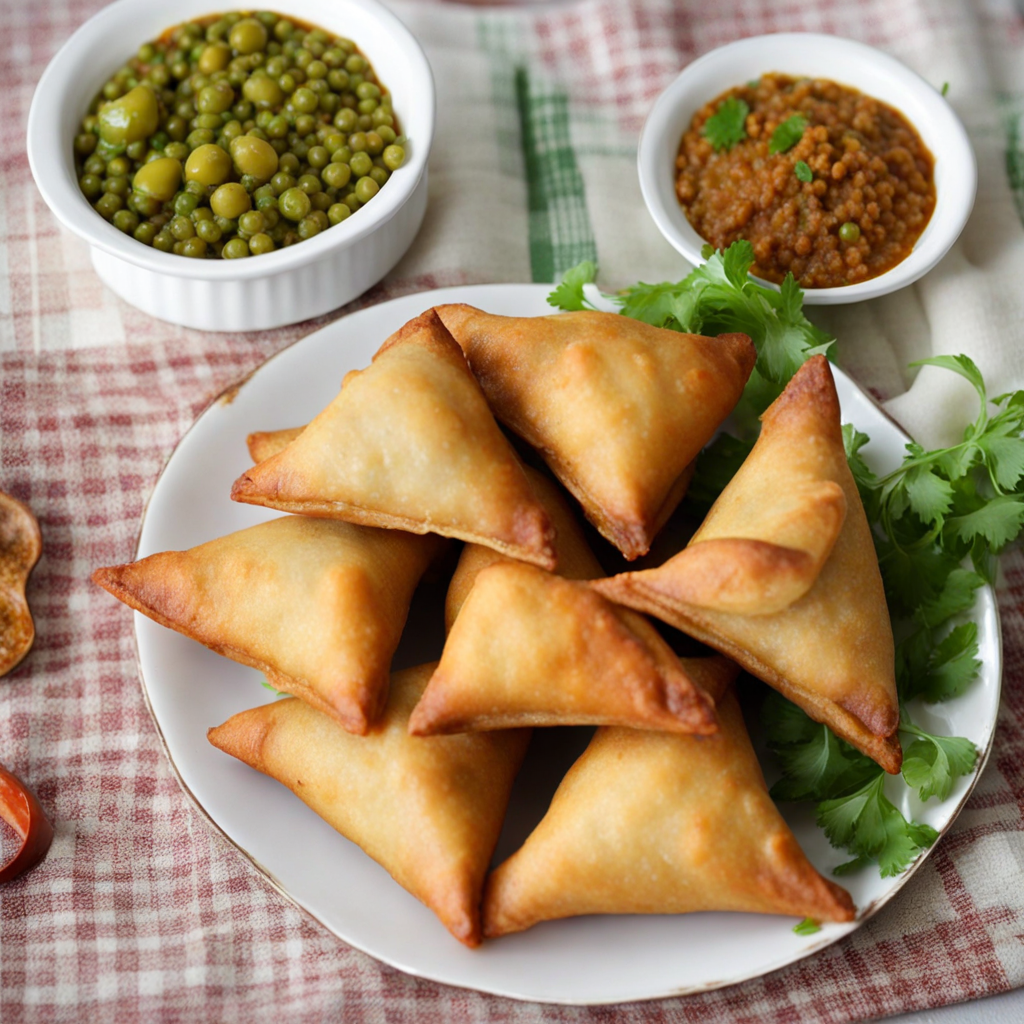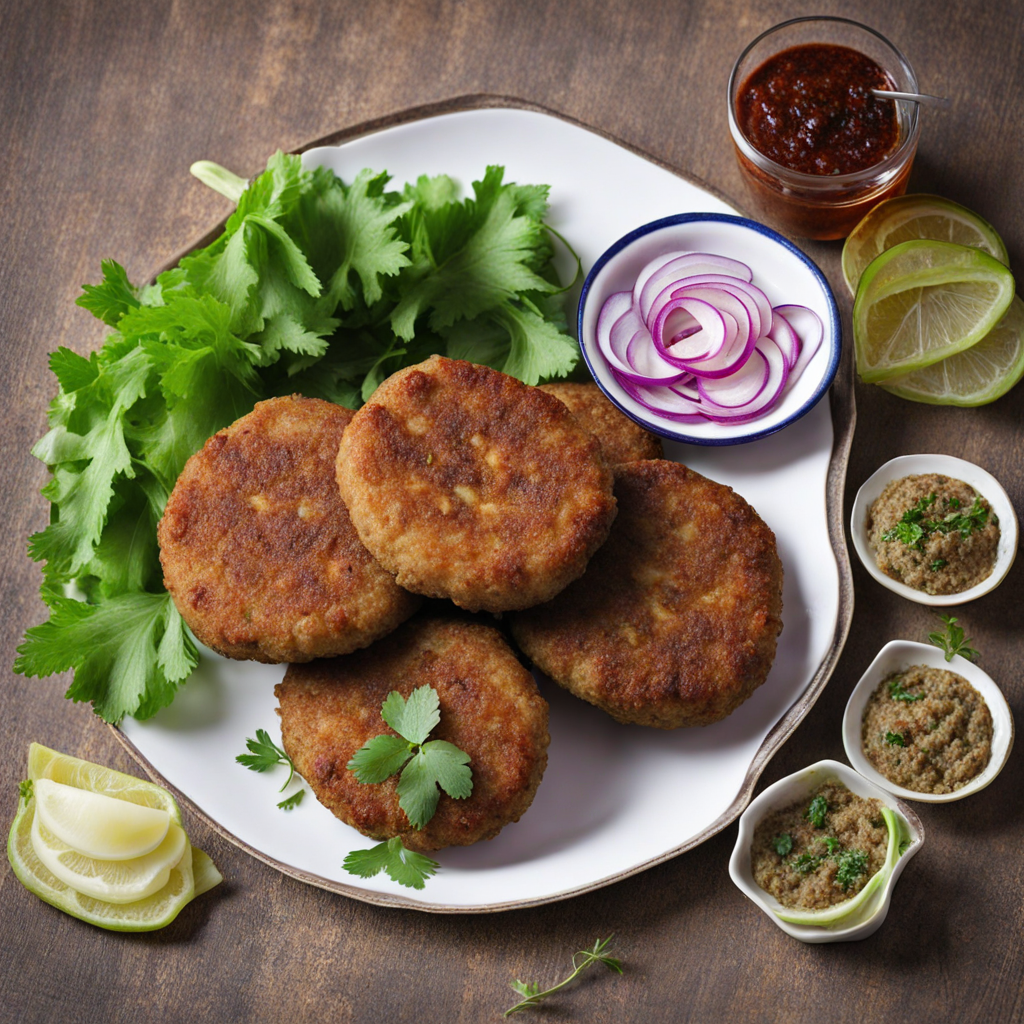Chana Chaat
Chana Chaat is a vibrant and flavorful street food dish hailing from Pakistan, showcasing a delightful blend of textures and tastes. At its core, the dish features chickpeas (chana) that are cooked to perfection, delivering a hearty and satisfying base. The chickpeas are often combined with finely chopped onions, tomatoes, and green chilies, introducing a refreshing crunch and a hint of spice. This medley is not only visually appealing but also offers a balance of nutrients, making Chana Chaat both a delicious and wholesome option for those eager to explore new flavors. The magic of Chana Chaat lies in its zesty seasoning. A generous drizzle of tangy tamarind chutney and a squeeze of fresh lemon juice infuse the dish with a tantalizing acidity that elevates the overall taste. To enhance the flavor profile further, a sprinkle of chaat masala—a fragrant mix of spices including cumin, coriander, and black salt—adds depth and complexity. The combination of these elements creates a harmonious explosion of flavors, from the earthy notes of chickpeas to the bright, zesty accents from the chutneys and spices. For an added dimension, Chana Chaat can be topped with crispy fried potatoes, sev (crispy chickpea noodles), or fresh coriander leaves, contributing an extra layer of crunch and aroma. The dish is often served in small bowls or on paper plates, making it a perfect snack for on-the-go enjoyment. Whether enjoyed as a filling street-side snack or as a part of a larger meal, Chana Chaat is a celebration of Pakistani cuisine that promises to tantalize your taste buds and leave you craving more.
How It Became This Dish
چنا چاٹ: A Flavorful Journey Through Time Introduction چنا چاٹ, or Chana Chaat, is a beloved street food from Pakistan that combines the earthy flavors of chickpeas with a medley of spices, vegetables, and tangy sauces. This dish not only tantalizes the taste buds but also tells a story of cultural evolution, regional diversity, and the rich tapestry of flavors that characterize South Asian cuisine. To explore چنا چاٹ is to embark on a journey through history, tradition, and community. Origins: The Birth of Chaat The origins of چنا چاٹ can be traced back to the Indian subcontinent, where the word "chaat" itself means "to lick" in Hindi. This term reflects the delicious and addictive nature of these snacks, which are often enjoyed on the streets of bustling cities. The history of chaat is believed to date back to the Mughal era in the 16th century, when the emperors of the Mughal dynasty introduced a variety of richly flavored dishes to their royal kitchens. These dishes gradually made their way to the streets, where local vendors began to innovate and adapt recipes to suit the tastes of the common people. Chana Chaat specifically highlights the chickpea, a staple legume in South Asian cooking. Chickpeas have been cultivated in the region for thousands of years, with archaeological evidence suggesting their use as far back as 7500 BCE in what is now Turkey. Over time, chickpeas spread across the Mediterranean and into South Asia, where they became central to various regional cuisines. Cultural Significance چنا چاٹ holds a special place in the hearts of many Pakistanis. It is more than just a snack; it embodies the essence of social gatherings, family celebrations, and street food culture. Traditionally enjoyed as an evening snack or as part of festive occasions, چنا چاٹ is often served at weddings, parties, and community events. The dish is typically prepared in large quantities and shared among friends and family, encouraging a sense of togetherness and communal spirit. Moreover, چنا چاٹ reflects the diverse culinary influences that characterize Pakistani cuisine. The dish incorporates a variety of ingredients, including onions, tomatoes, green chilies, and coriander, which are often seasoned with spices like cumin, chaat masala, and a squeeze of lime. This combination of flavors showcases the regional produce and spices that are integral to Pakistani cooking, highlighting the country’s agricultural bounty. Development Over Time As Pakistan emerged as an independent nation in 1947, the food culture underwent significant transformations. The influx of migrants from India brought new flavors and recipes, contributing to the diversity of chaat offerings. While the basic components of چنا چاٹ remained consistent, variations began to develop based on regional preferences and available ingredients. In urban centers like Karachi, Lahore, and Islamabad, street vendors began to experiment with different toppings and preparations. The use of yogurt, pomegranate seeds, and even fried potatoes became popular, leading to a plethora of versions of چنا چاٹ. Each city adopted its unique twist, creating a vibrant tapestry of flavors that celebrated local tastes. In recent years, the rise of health consciousness among consumers has also influenced the evolution of چنا چاٹ. With an increasing emphasis on nutritious eating, many vendors now offer healthier versions of the dish, incorporating more vegetables, reducing the amount of oil, and using whole-grain chickpeas. The Street Food Phenomenon Street food is an integral part of Pakistani culture, and چنا چاٹ exemplifies this phenomenon. Vendors can be found at every corner, serving up steaming plates of this delightful dish to eager customers. The bustling atmosphere of street food stalls, filled with the aroma of spices and the sounds of lively conversations, creates a unique dining experience that draws people in. The rise of social media has also contributed to the popularity of چنا چاٹ. Food bloggers and influencers frequently share their experiences, showcasing not only the dish itself but also the vibrant scenes of street food culture. As a result, چنا چاٹ has gained international recognition, inspiring food enthusiasts around the world to explore this delicious snack. Furthermore, food festivals and markets dedicated to street food have emerged in major cities, celebrating the culinary heritage of Pakistan. These events often feature چنا چاٹ as a star attraction, highlighting its significance as a cultural emblem. The Modern Twist on Tradition In contemporary times, چنا چاٹ has transcended its street food roots, making its way into restaurants and homes across Pakistan and beyond. Chefs and home cooks alike have begun to experiment with the dish, infusing it with modern techniques and ingredients. Some variations include fusion-style چنا چاٹ, which incorporates elements from other cuisines, such as avocado or quinoa, appealing to a broader audience. The dish has also found its way onto menus in international restaurants, where it is often reimagined to suit diverse palates. This globalization of چنا چاٹ reflects the broader trend of culinary fusion, whereby traditional recipes are adapted to fit contemporary tastes while still honoring their origins. Conclusion چنا چاٹ is more than just a delightful snack; it is a culinary narrative that embodies the history, culture, and communal spirit of Pakistan. From its origins in the Mughal courts to its evolution as a staple of street food culture, this dish tells the story of a nation that values flavor, tradition, and togetherness. As چنا چاٹ continues to adapt and thrive in a changing culinary landscape, it remains a beloved symbol of Pakistani heritage, inviting people from all walks of life to savor its rich, spicy goodness. Whether enjoyed on the bustling streets of Lahore or in the comfort of one’s home, چنا چاٹ is a celebration of taste that unites people through food, transcending borders and generations.
You may like
Discover local flavors from Pakistan


